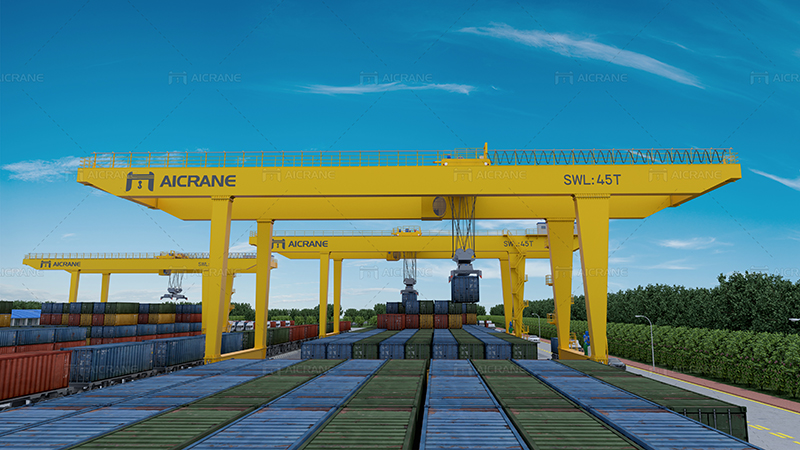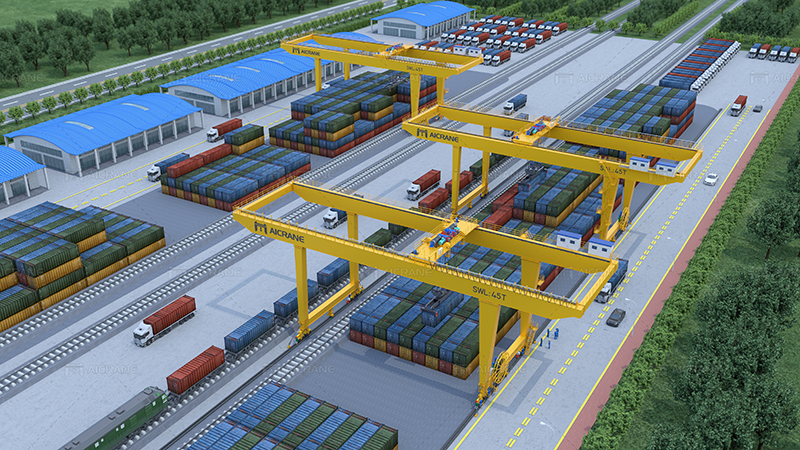Railway gantry cranes play a pivotal role in the efficient functioning of modern transportation systems, contributing significantly to the seamless movement of goods and materials across vast networks of railway tracks. These specialized cranes are essential for various tasks related to the loading and unloading of cargo, maintenance of railway infrastructure, and overall operational efficiency. In this article, we will explore the multifaceted role of railway gantry cranes and their importance in supporting the global logistics and transportation industry.

Overview of Railway Gantry Cranes:
Railway gantry cranes, also known as rail-mounted gantry cranes or RMGs, are sophisticated lifting equipment designed to operate along railway tracks. They are typically installed in railway yards, container terminals, and intermodal facilities where the efficient handling of cargo containers and other heavy materials is paramount. Unlike traditional cranes, gantry cranes are mounted on a framework that runs along parallel rails, allowing them to move horizontally and cover a large area.
Loading and Unloading of Cargo:
One of the primary functions of railway gantry cranes is the loading and unloading of cargo onto and from railway cars. These cranes are equipped with powerful lifting mechanisms and spreader beams that enable them to efficiently handle containers, bulk goods, and other heavy loads. This capability is crucial for streamlining the transfer of goods between different modes of transportation, ensuring a smooth flow through the logistics chain.
Container Handling:
Railway gantry cranes are particularly vital in container terminals, where standardized shipping containers are transferred between trains and other modes of transport such as trucks or ships. The cranes are designed to lift containers from the train and place them on the ground or onto other transportation vehicles. This process is essential for optimizing the use of containerized cargo, a key component in modern logistics.
Maintenance of Railway Infrastructure:
Railway gantry cranes are not only involved in cargo handling but also play a significant role in the maintenance and construction of railway infrastructure. These cranes are used for tasks such as laying and adjusting tracks, installing signal systems, and replacing worn-out components. The ability to move along the tracks allows them to access various points of the railway network, facilitating efficient maintenance operations.

Operational Efficiency:
The use of railway gantry cranes contributes to overall operational efficiency in railway yards and terminals. The high lifting capacity and mobility of these cranes mean that loading and unloading processes can be completed quickly, minimizing turnaround times for trains and enhancing the throughput of goods. This efficiency is crucial for meeting the demands of modern supply chains and reducing transportation costs.
Flexibility in Handling Different Cargo Types:
Railway gantry cranes are designed to handle a diverse range of cargo types, including containers, bulk goods, and heavy machinery. The versatility of these cranes makes them adaptable to the varied needs of the transportation industry. Whether it’s loading containers onto trains or unloading raw materials from railcars, gantry cranes provide a flexible solution for handling different types of cargo efficiently.
Automation and Technological Advancements:
In recent years, technological advancements have led to the increased automation of railway gantry cranes. Automated systems, including sensors, cameras, and computer control, enhance the precision and speed of operations. This not only improves efficiency but also contributes to safety by minimizing the risk of human error. Automated gantry cranes are becoming increasingly common in modern railway facilities, further optimizing logistics processes.
Environmental Impact:
Efficient transportation is not only about speed and capacity but also about environmental sustainability. Railway gantry cranes contribute to a greener transportation system by facilitating the movement of goods via rail, which is generally considered a more environmentally friendly mode of transport compared to road or air. By supporting the efficient use of railways, gantry cranes play a role in reducing carbon emissions associated with transportation.
Conclusion:
Railway gantry cranes are indispensable assets in the modern transportation infrastructure, supporting the efficient movement of goods and materials across vast railway networks. From loading and unloading cargo to maintaining railway infrastructure, these cranes play a multifaceted role in enhancing operational efficiency and contributing to the overall sustainability of transportation systems. As technology continues to advance, the role of railway gantry cranes is likely to evolve, further optimizing the logistics and transportation industry for the future. For more info, visit https://steelmillcranes.com/